TIME SHARES |
Organized by Rhizome and co-presented by the New Museum of Contemporary Art
|
TOURING SHOW
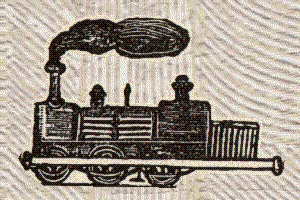
Touring Show is an online exhibition of artists' maps and 'virtual tours' of contested spaces, ranging from the Military Industrial Complex, to the US-Mexico border, to the body. The mapping and social organization of spaces has not only had a profound impact on the cultures that inhabit them, it has also contributed to the development of a number of artistic traditions, including cartography, drafting, and landscape painting and photography. More recently, the emergence of the artists' lectures and tours as artistic media has coincided with the practice of 'radical cartography,' which in its most elemental terms is the charting of a space's relationship to the empire or ideology that governs it. Also significant to the specific cultural moment traced here is the mingling of technology's impact on our landscape and the use of technologies to explore and document this terrain. The artists here offer a combination of web-based and public projects that can be interpreted as tours in this vein. While some of the projects read as interventions, others simply present the information needed to navigate viewers' own subjective traversals.
Curated by Marisa Olson for Rhizome.
WORKS
 |
|
Boston-based artist Kanarinka maps her city's evacuation route in the project It takes 154,000 breaths to evacuate Boston. The route was set-up as a means of escaping the city in the event of a major natural disaster or terrorist attack, and the path's infrastructure cost locals nearly $1-million--which the artist interprets as a major investment in fear. In a currently-ongoing series of public runs throughout this path and podcast videos of the exercises, Kanarinka uses a subjective, corporeal model to measure the space of what she calls a post-9/11 new geography of insecurity.
|
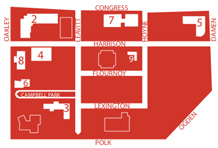
|
|
The Temporary Travel Office is the umbrella 'tourism organization' through which Ryan Griffis and periodic collaborators contextualize the politics of select locales and travel to and from them. Many of these projects explore the notion of tourism as a governmental enterprise. The Office's Tour of the Chicago Technology Park (CTP) exists as both an online and offline project. Originally an intervention meant to explore how corporate biotechnology shapes the spaces we live in, their self-guided audio tour of the CTP investigates the city's attempt to compete in the 'new economy' of bio- and nanotechnology. Web visitors can take a virtual tour of the area and experience the ongoing saga of Chicago's experiments with social engineering.
|
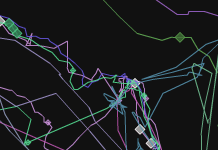 |
|
C5's GPS Media Player grew out of the California-based collaborative's Landscape Initiative series in which they extensively travelled and mapped sites of social and topographic significance, including the Great Wall of China, Mount Shasta and Mount Fuji, and a 13,000 mile motorcycle ride across the USA. After creating a large archive of data about these sites, they carried out projects that compared the different cultural, political, and cartographic means of demarcating and representing spaces. In particular, C5's work reflected an 'update' of photographic media through its synthesis with satellite technologies. The web-based GPS Media Player provides an interface for browsing their database and exists as a testament to the role of information, archives, and charts as not only documents but also art objects in their own right.
|
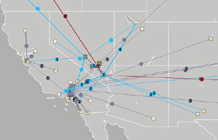 |
|
Trevor Paglen's Unmarked Planes and Hidden Geographies uses the flight plans of a series of unmarked airplanes to index a web of secret or 'black' sites in the southwestern United States. His presentation of this data creates a tension between what is often conceived of as wide-open civilian airspace and the highly classified realm of the Military Industrial Complex. This contradiction between public and private is further plunged in Paglen's use of public information such as refueling records and Federal Aviation Administration documents to piece together a narrative about the means of transport employed by a secret society of 'public' employees.
|
 |
|
Walker
Finishing School, 2004-present
Finishing School embraces the tradition of walking tours with Walker. The group's methods are often parodically pedagogical and here they offer a library of Google maps and MP3s with which listeners can roam the greater Los Angeles area. The project invites anyone to upload their own narratives about the region and the result is a series of personal guides through often-overlooked neighborhoods. A variety of voices come together, here, to reveal secret or little-known stories about local landmarks or more banal destinations that tend to escape the scope of sanctioned maps.
|
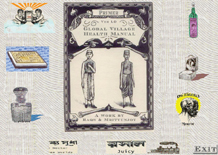
|
|
The Raqs Media Collective collaborated with Joy Chatterjee to create the Global Village Health Manual, ver 1.0, a project which creatively conflates the corpus of a library and the corpus conceived in the post-medicalized body. Historically, the relationship between the body and the measurement of time shifted when the laborer became embroiled in the assembly line. The mechanical understanding of the body further contorted with the introduction of 'virtual space' as one in which bodies of data, synthetic prostheses, cloning, and torture or injury leapt from the pages of 19th century print culture into the realm of virtual reality. The GVHM splices together a diverse range of web search-derived material to give a tour of the body's location and fragility in cyberspace.
|
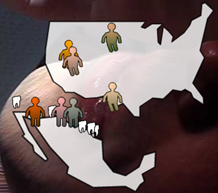 |
|
Dentimundo.com
Ricardo Miranda Zuniga, 2005
Ricardo Miranda Zuniga's website, Dentimundo.com offers a virtual tour of Mexican dentists on the US/ Mexico border. The artist visited the highly-politicized region of the border that stretches between the Gulf of Mexico and the Pacific Ocean, and on his trip discovered that cheap dentistry is amongst the most popular reasons that US citizens travel into Mexico. Dentimundo is intended to serve and inform consumers on both sides of this 'hot new corrido' and it exports the parlance of both the dot-com era and tourism industry in pitching itself as 'the best online resource to learn about Mexican border dentistry practice.' In the course of doing so, the site also offers information on the geography of this country which is so crucial to North American trade and, yet, so under-explored by North Americans.
|








